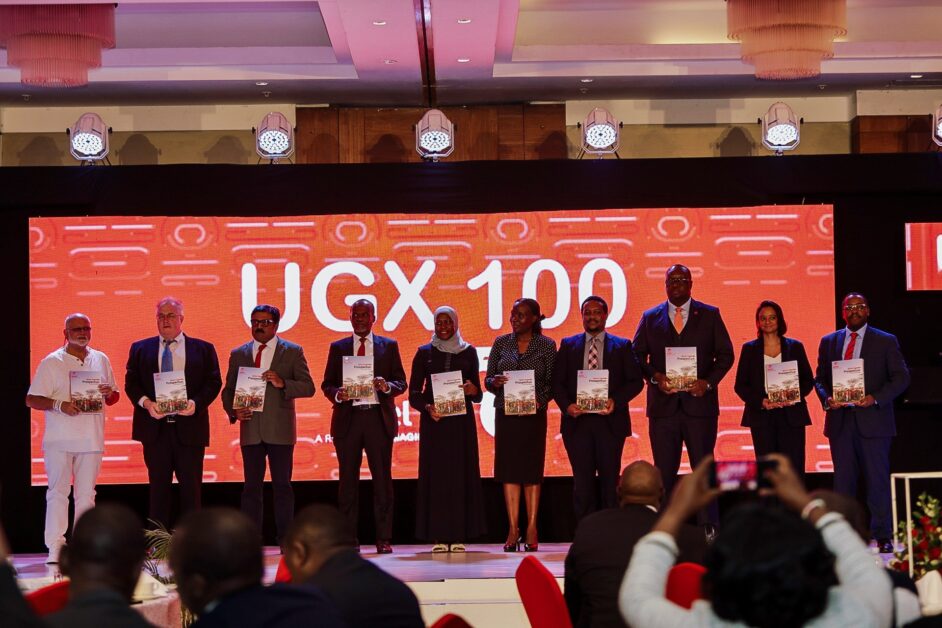The sale of Airtel Uganda’s 20% shares in what is now Uganda’s second-biggest initial Public Offering (IPO) closes this Friday, October 13th 2023. If you haven’t yet bought shares in the telco, which is now Uganda’s fastest-growing telco for the last 10 years, you have just 2 days to go.
Many an analyst and investment banks such as Old Mutual Investment Group, Dyer and Blair as well as investors like Dr. Sudhir Ruparelia have given the IPO a good “buy” rating citing the telco’s past above-industry growth as well as positive industry projections, make the Airtel IPO a compelling investment.
But the story of the telco which debuted Uganda’s first mobile phone connections in 1995 wasn’t always this rosy. CEO East Africa traces the rise of the telco from an out-competed and struggling pioneer in the very early 2000s to becoming a very strong co-leader with 49% market revenue share and 47.3% subscriber market share and a leader in average revenue per user (ARPU).
How did the telco pull off this comeback and who are the key players that drove and consummated this reverse of fortunes⏤ probably one of the most bold and pronounced in Uganda’s private sector recent history?
Incorporated on 17th July 1992 as Celtel Uganda and subsequently launching its services in 1995 as the first telco, Celtel Uganda was at the time, the in-thing. But in October 1998, MTN Uganda also launched its services in the country, quickly ‘eating’ quite a number of slices from Celtel/Airtel’s bread.
What followed was years of struggle and losses made worse by the 2001 launch of Uganda Telecom’s mobile service and subsequently, the 2008 arrival of mobile services by Warid Telecom and the 2009 launch of Orange Telecom. It wasn’t until 2010, when Bharti Airtel, the out-of-India mobile communications giant completed the acquisition of Zain Africa, the then owners of Zain Uganda (Celtel), for a gigantic USD8.97 billion, marking the entry of the Airtel brand into the country.
Thanks to a powerful mother brand, Airtel Uganda, despite losses continued making investments⏤ into technology and people and skills transfer. But the major and perhaps the most game-changing investment would be Airtel’s 2013 acquisition of Warid Telecom and the 2014 subsequent merger of the two, into one operation, consolidating Airtel Uganda as Uganda’s second largest market player.
However, although the second biggest player by this time, the new combined company was still very far from catching up with MTN Uganda, the market leader. For example, while the new company’s combined turnover, including the freshly launched Airtel Money, at the end of 2013 was UGX505 billion, MTN, by comparison, had a big lead with UGX1.19 trillion.

V.G Somasekhar, the then Airtel Uganda Managing Director and the key architect of the merger, brought his big telecoms experience to bear and consolidated the merger, bringing in a lot of cost synergies and even managed to make a windfall UGX52 billion net profit in 2013⏤ the first profit after several years of profit drought!
From losses to profits⏤Airtel’s transformation starts
Somasekhar left Uganda in February 2014 back to the Group, where he oversaw key Airtel Africa markets of Zambia, Malawi, Madagascar, Seychelles, Burkina Faso, Niger and Chad. He was replaced by Tom Gutjahr, an Austrian experienced telecom CEO with significant industry leadership in the African continent⏤ Algeria, Chad and Rwanda as well as Paraguay in South America. Further to the cost synergies he inherited, Gutjahr further improved Airtel’s distribution footprint and processes, as well as made further network investments, winning over more people to Airtel. Although Airtel ended 2014 with a UGX131 billion loss, it managed to grow customers and even made a UGX217 billion leap in revenues, from UGX505 billion to UGX722 billion⏤ a growth of 43%!
By the end of 2015, Airtel’s revenues reached UGX846 billion with a UGX86 billion profit! In 2016, Airtel Uganda debuted into the trillionaire revenue fold, taking in UGX1.03 trillion and a net profit of UGX161 billion. Perhaps more important to note is that, not only did Airtel grow its revenue and profitability in 2015 and 2016, but it also narrowed down the profitability gap between it and MTN Uganda, the market leader and eventually overtook it, to become the most profitable telecom in Uganda. By comparison, in 2016, Airtel made a net profit of UGX161 billion on revenues of UGX1.033 trillion, versus MTN’s UGX96 billion net profit, on UGX1.31 trillion gross earnings.
It shall be recalled that just three years before, in 2014, MTN had made UGX332 billion in net profit on UGX1.27 trillion in turnover, versus Airtel’s UGX131 billion in losses and UGX722 billion in turnover!
After Gutjahr left in June 2016, he was replaced by Anwar Soussa who briefly served until September 2017. During this one year, Airtel’s growth didn’t stop.
V.G Somasekhar would return to Airtel Uganda in September 2017 to lead a now much bigger Airtel, with nearly UGX1.16 trillion in turnover and UGX245 billion in net profit as of the end of 2017. By the end of 2018 Airtel’s turnover had reached UGX1.21 trillion and net profit grew by 38% to reach UGX338.1 billion ahead of MTN’s UGX220 billion on a gross UGX1.6 trillion in revenue.
Under V.G Somasekhar’s second leadership season, Airtel’s growth continued and by the end of 2020 when he was replaced by Manoj Murali, Airtel’s turnover had reached UGX1.55 trillion and net profits UGX405.9 billion!

Explaining Airtel’s prolific growth, V.G Somasekhar told CEO East Africa in a January 2020 interview that Airtel’s growth was down to “investing ahead of the curve” into a “triple play of accessibility (network), affordability and simplicity (of pricing)”.
For example, by the end of 2019, the telco had achieved 100 per cent 2G, 3G and 4G at all its sites. In 2019, Airtel also scaled up its network dramatically from about 1,300 sites in 2017 to 2,000 sites by March 2020, taking the Airtel network to 100% of all Ugandan districts and sub-counties as well as between 5,500-6000 parishes⏤roughly 95% plus of the population.
Under V.G Somasekhar, Airtel, would also in July 2020, be granted a 20-year National Telecommunications Operator (NTO) License which permits the company to establish, install, operate, maintain, lease and sell telecommunications systems and to provide all types of telecommunication services in Uganda at a cost of USD74.4 million.
Airtel under Manoj- investing ahead of time and winning with technology
Manoj Murali arrived in Uganda from Airtel India where he handled different roles across geographies in India as well as at the Corporate Office. He also had stints in international operations in Sri Lanka, Seychelles and the Channel Islands.
His most immediate role, before Uganda, was Chief Executive Officer for the Tamil Nadu and Kerala regions for Airtel. Prior to this, he held other roles including; Chief Operating (Executive) Officer in Rajasthan and Business Head (Chief Operating Officer) in Andhra Pradesh. He joined Bharti Airtel in 2001 and combined, he brought with him to Uganda, over two decades of experience in the telecom industry across various roles.
One of his key assignments was the June 2021 separation of the fintech arm of the business (Airtel Money) and the GSM and Data Business, which remained as Airtel Uganda while the fintech arm became Airtel Mobile Commerce Uganda Limited (AMCUL). The transfer of the Airtel Money Services business to AMCUL was done in order to comply with a legal requirement under the National Payment Systems Act, 2020 to segregate mobile commerce business from the core telecommunications business.
But even after the separation of the two companies, Airtel Uganda, has under Manoj Murali continued to grow briskly.
Turnover, for the new entity grew by 16.3% from UGX1.29 trillion in 2020 to UGX1.51 trillion while net profit grew 41.9% from UGX277 billion to UGX393 billion. In 2022, turnover grew 6% from UGX1.51 trillion to UGX1.6 trillion. Net profit however reduced 17% from UGX393 billion to UGX326 billion.
In an interview with CEO East Africa Magazine, Manoj Murali attributed this continued growth to keeping eyes on the future and investing in creating a world-class network
“Our strategy has always been to invest ahead of time, aptly named “Winning with Technology”. As a technology enabler, we focus on creating a leading modernised network that can provide the data capacity to meet rapidly growing demand and enhance connectivity and digitisation in our markets,” he said.

“We increase data capacity by an annual 31% on our network. For example, we invested in 5G ahead of spectrum allocation because we understand our role in enabling businesses. We have also intentionally focused on a strong distribution network that combines large format, small format service centres and agents to enhance our ability to reach and serve our customers faster and better,” he further explains adding: “Our simple and transparent pricing plans based on our ‘more for more’ principle, that has helped us to win and retain customers has been our pre-occupation.”
For example, the company today has over 2,500 4G sites across the country. The company also now enjoys 47.3% customer market share and 49.3% voice revenue share. The company is also the leader in average revenue per user⏤ UGX10,130 for Data and UGX5,835 for voice.
Airtel is now looking to ride on this strong foundation to post another solid performance, this 2023. Revenue is forecast to grow by 16.6% to reach UGX1.86 trillion while net profit is expected to reach UGX461 billion. This growth is anchored mainly on a 7% growth in voice revenue and a 33.6% growth in data revenue- all powered by a 17.1% growth in the customer database.
The company also plans to, partly using the UGX800 billion it shall raise from the IPO, increase capacity as well as coverage by adding more sites with a specific focus on data networks, especially 5G.
“We are excited about the opportunities that lie ahead for Airtel Uganda. We believe that our strong brand, extensive network infrastructure, commitment to innovation and customer-centricity will enable us to continue to grow our market share and deliver value to our shareholders. We remain deeply committed to Uganda and we believe that we have a responsibility to use our resources and expertise to make a positive impact in the lives of Ugandans, and we will continue to invest in initiatives that promote sustainable development, education, and entrepreneurship,” concludes an optimistic Hannington Karuhanga, who has been the company’s Board Chairman since June 2016 and has overseen most of this growth.
